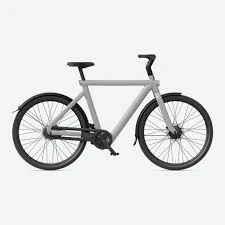9 月 . 10, 2024 19:00 Back to list
how to fix derailleur on mountain bike
How to Fix a Derailleur on a Mountain Bike
A malfunctioning derailleur can turn a thrilling mountain biking adventure into a frustrating experience. Understanding how to fix this crucial component can save you time and ensure a smoother ride. Here’s a step-by-step guide to help you diagnose and fix common derailleur issues on your mountain bike.
Understanding the Derailleur
The derailleur is a mechanism that moves the chain between different gears on your bike. When it’s functioning correctly, it allows for smooth shifting and efficient energy transfer. Common issues that affect the derailleur include misalignment, cable tension problems, and worn-out components.
Tools You’ll Need
Before starting the repair, gather the necessary tools - A 5mm Allen wrench - A Phillips screwdriver - A chain tool (if required) - A bike stand or a way to securely position your bike - Lubricant
Diagnosing the Problem
1. Check for Alignment - Shift to the highest gear (smallest cog) and examine the derailleur’s alignment. The derailleur should be parallel to the cassette. If it’s bent or out of alignment, gently bend it back into place.
how to fix derailleur on mountain bike

2. Inspect the Cable - Examine the gear cable for fraying or wear. If the cable is damaged, replace it. If the cable seems intact, check the tension. A slack cable can lead to poor shifting performance.
3. Adjusting the Cable Tension - To increase the tension, use the barrel adjuster located on the derailleur or near the shifter. Turn it counterclockwise to tighten or clockwise to loosen the tension. Test the shifting after making adjustments.
4. Limit Screws - Inspect the limit screws. These screws prevent the derailleur from moving beyond the largest and smallest gears. Use a Phillips screwdriver to adjust them. Turn the “H” screw to adjust the position for the highest gear and the “L” screw for the lowest gear.
5. Clean and Lubricate - A clean derailleur functions better. Use a rag to wipe down the derailleur and remove any dirt or grime. Apply a light lubricant to the pivot points, but avoid over-lubricating as it can attract more dirt.
6. Check the Chain and Cassette - Inspect the chain for stiff links or wear, as a poor chain can affect shifting. Use a chain tool to replace the chain if necessary. Similarly, check the cassette for wear signs; a worn cassette will compound shifting issues.
7. Final Test - After making adjustments, test ride your bike to ensure that shifting feels smooth across all gears. Make further adjustments as needed.
Conclusion
Fixing a derailleur on a mountain bike can seem daunting, but with a little patience and the right tools, it’s a manageable task. Regular maintenance, such as cleaning and checking the alignment, can prevent many common derailleur problems and enhance your cycling experience. When in doubt, consult your local bike shop for professional assistance. Enjoy your rides, and keep your bike in top shape!
-
The Main Application Scenarios of Mountain Bike
NewsOct.29,2024
-
Suggestions for Selecting and Maintaining Mountain Bike
NewsOct.29,2024
-
Characteristics of Kids Balance Bike
NewsOct.29,2024
-
Characteristics of Baby Stroller
NewsOct.29,2024
-
Characteristics and Advantages of Mountain Bike
NewsOct.29,2024
-
Baby Stroller Purchasing Suggestions
NewsOct.29,2024
-
Suggestions for Purchasing Kids Balance Bike
NewsOct.09,2024

